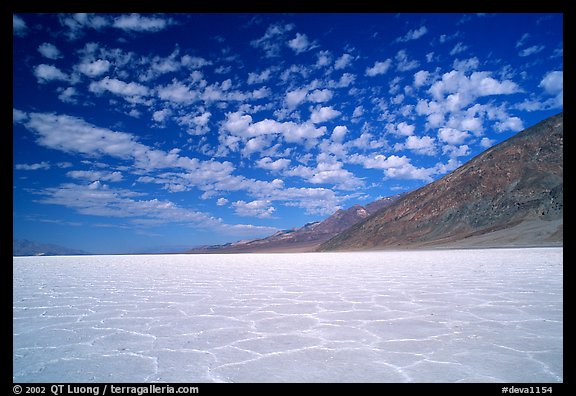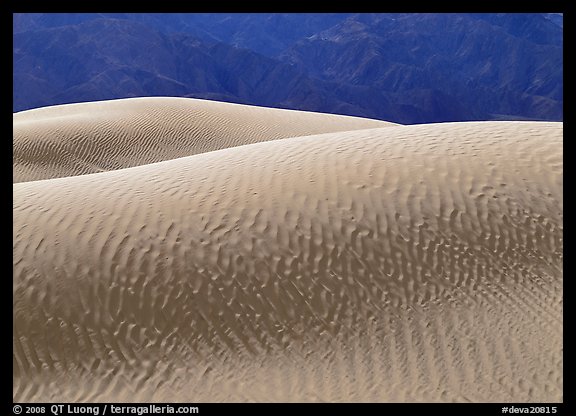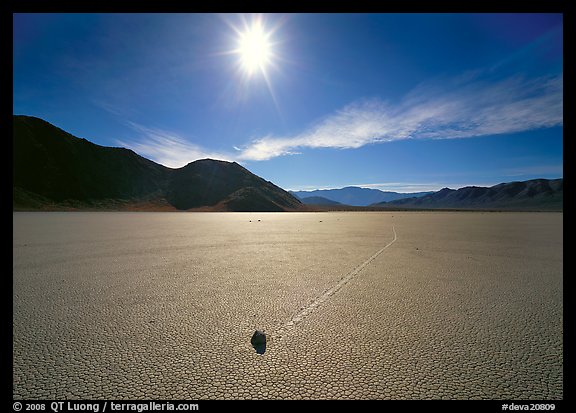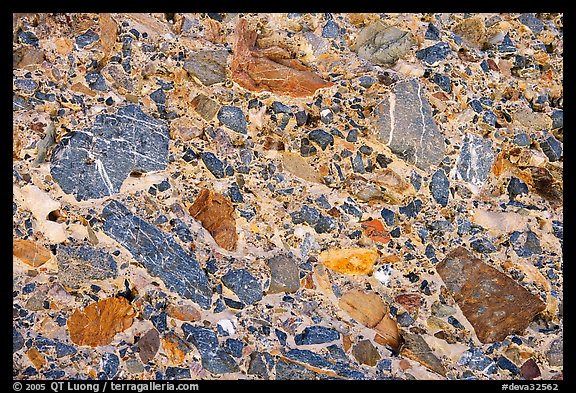Four Death Valley midday images explained
2 Comments
Last week, I posted three images of the Death Valley landmarks, the salt flats, sand dunes, and playas. I invited you to think about how those images, which somehow defy the conventional landscape photography wisdom of not shooting at midday, could work. In this post, I am providing my answer to the question.

Most images of the Badwater Salt Flats use a wide-angle lens and place the horizon high. Since this creates a lot of space between the vertices of the polygons, light that shows the finer texture within them is necessary.
In this image, shooting in the middle of the day to convey the blinding feeling, I used the serendipity of a sky with many small clouds to place the horizon low. That placement not only emphasized the sense of openness and the sky, with its interesting texture, it also resulted in a denser pattern for the salt flat vertices, compared to what you’d see with a prominent foreground. That denser pattern matched the clouds texture and color, creating a symmetry.

Low light is usually preferred for the Mesquite Sand Dunes because it creates shadows by hitting the raised edges of the ripples, making them visible.
The same effect can be obtained with a high sun provided that the angle of the sun rays is close to parallel to the angle of the slope. Of all the dunes around, I selected those for their steep slope grazed by the sunrays, and shot backlit, which also helped revealed its texture. The background of mountains provides a texture that echoes that of the dune while remaining secondary because of the dark tones, and I made sure to exclude the sky since it would have been brighter than the dunes, therefore pulling the eye away from them.

Likewise, the low light of early morning or late afternoon is usually preferred because it delineates the tracks as well as the tiny honeycombs of texture in the cracked mud of the Racetrack Playa by projecting shadows into the mud cracks.
Shooting backlit emphasizes the specularity of the playa: that its flat, light-colored areas reflect the light like a mirror, or a body of water. The recessed parts – the space between the honeycombs – do not act this way, therefore they are much darker. So for a different reason, backlight reveals its texture, just like low light does. Having the sun in the frame allowed me to create a symmetry with the rock.

The Death Valley chapter of my upcoming book includes a total of 12 images, and most of them are not midday! However, there is another one which is. One of the most easily accessible of the deep canyons carved by water in the mountains surrounding Death Valley, Mosaic Canyon is a showcase of amazing rock formations. At midday, I found colorful close-ups in shaded parts of the walls. That’s a technique which can used in many places.
I hope that this post has inspired you to look more intentionally at the ways light interacts with a scene, and to realize that with careful consideration, some satisfying images can be made at any time of the day.


Very informative, interesting and helpful. Thanks for sharing.
Thank you for your informative explanations of different POVs and times of day. I benefited from a non-normal view of pictures that showed one can make pictures, whenever. Looking forward to your upcoming book.